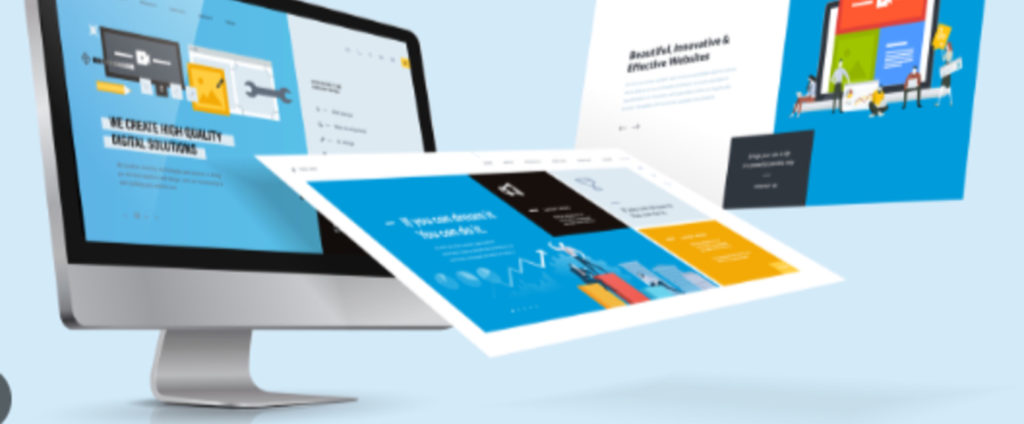Your site was created to be noticed. However, whether you’re building an online store to sell your products, display a portfolio, or even launch blog posts, more than quality web design is required. While offline marketing is in place to draw attention to your Website Design UK company, SEO (SEO) is among the most effective (and most cost-effective) ways to attract new users to your site.
It’s time to improve your website rank and do it with fashion. In this article, we’ll guide you through creating your user-friendly website using SEO. The synchronization of web design and SEO tools will not just produce an attractive website but also the chance to make you rise to the ranks of search results webpages (SERPs).
What Is SEO?

SEO is the act of optimizing your website’s content to be able to compete on Google’s natural results pages. Whatever the goal of your website, whether that’s selling online products, booking clients, or building brand recognition and brand loyalty–SEO is among the most effective ways to bring more users to your website.
Google’s bots are information-grabbing informers that go online to examine the contents of live websites, assisting the search engine in determining whether it is as relevant (or not) for specific searches. Search engines such as Google utilize this information to show natural results from search engines to users. Although you’ll see that the top spot on the SERP is usually heavily dominated by ads that are paid for but below, you’ll see organic results that are ranked based on the Google algorithm’s criteria.
Why is it crucial to design your website using SEO?
Everyone wants their site to be the first stop for people who have questions or need to “Google The Answer.” SEO will attract visitors to your website, and sound design is why they stay on your site. In combination, SEO and site design will help your business – whether small or large- impact those who visit.
Being aware of your website’s SEO when you design your site will provide the following benefits over time:
- It increases traffic to your website.
- Improves the performance of your website
- Utilizes practices that are in sync with UX best practices
- Enhance brand awareness and authority
How to Design an Attractive and user-friendly website Design that Boosts SEO:
Incorporating SEO techniques into your site’s design will provide a solid foundation for search engines to be aware of when you publish. SEO should be included as an element of iteration in your web design process and could be upgraded, updated, and modified over time.
Create user-generated content that is of high quality:
The search engines remain searching for content that is of high quality and pleases their clients. In the past, optimizing content required methods like “keyword stuffing”-similar techniques no longer work. Google’s guidelines, modified over time, are more advanced and focused on people.
While it’s not a precise scientific method, Google has general Quality Evaluator Guidelines that their human quality raters use for evaluating content and forming the algorithm of Google. This algorithm is continuously tweaked to provide top-quality content on the search results page.
Your website design needs to provide a memorable experience for your Web Design UK company’s site visitors. The main part of this formula is creating high-quality content with relevant images, informative text, and powerful brand messages.
Social proof your site:
Regarding trust in marketing, Google is also influenced by companies with a growing influence and social media. While it’s not directly affecting SEO, an active social media presence could increase your position in the search results over time. Using your websites to promote your brand’s image on social media will result in more site visitors and better conversions, and both impact SEO.
Be sure that your website’s text is clear:
Readability is ensuring that the text used on a website is accessible to all types of users, including those with visual impairments. Selecting the right fonts for your site is an aspect of designing a website, and it’s about more than just the visual appeal of your website, its branding, user experience, and (albeit in a way) SEO.
There needs to be a specific rulebook to ensure that your website’s typography meets the requirements of search engines. You’ll discover that adhering to various design guidelines for excellent UX design goes hand-in-hand with optimizing your site’s SEO growth. Also, increased accessibility naturally boosts metrics such as bounce rates, click-through rates, and the amount of time visitors spend on your website, all of which are positive signals to Google.
Create a hierarchy using headers within the content:
When the bots from search engines look through your website pages and read your content, a large part of how they read your content relies on having a coherent structure. Like users, the algorithm of Google has been trained to detect the order and logic of images and text to comprehend the content of your website.
Headers are an internet design element that organizes and breaks down your website in a way that can benefit both UX and SEO. Header tags are visible to the visitor and integrated into your website’s design, including headings, titles, and sub-headings.
Make sure that your website’s Metadata is complete:
Metadata is the term used to describe descriptions added to your website’s pages that summarize the information on the page. Although they’re not present on the webpage, they are embedded in the code to aid Google in understanding the content and presenting it to the users. When you’ve got the best techniques kept in mind the best practices, metadata can be an SEO technique that can make the appropriate search terms find your site.
Although it’s not accessible to users of your site, Metadata is displayed on Google’s search results pages to show your Web Design UK company’s site’s content. They are typically the first contact potential customers will have with your site and are a significant factor in separating your site from competitors.
Internal linking is a practice of creating internal links:

Internal linking refers to linking pages on your site between them. Alongside the navigation menu on your site, it’s an essential element of the structure of your website. From a design standpoint, they’re a necessary element of user experience, allowing users to navigate quickly to the information they’re seeking. Visitors will be directed to the right page on your site, but they’ll also come across relevant content when they browse by using internal links to guide them to the right page.
In terms of SEO, your website’s internal linking assists search engines in knowing what pages are about and what they are connected to. Internal linking can also inform Google what your site’s most popular and significant pages are (i.e., pages with many internal links leading to them being more important).
Layout a seamless information architecture:
One of the key areas where user behavior and SEO is always “on one page” is your website’s information architecture. It is the process of arranging, labeling and arranging the content on your site to form an orderly pattern that visitors can follow. It’s more than just a decorative arrangement. When we talk about information architecture, it covers:
- Layout and layout of the content on every page
- Navigation menus
- Categories, subcategories
- Tags or descriptive labels
- The flow of users and their journeys on the website
- Create an online sitemap
Be sure that the pages of your site are correctly indexed:
The process of getting your site listed by Google is among the most crucial elements of SEO as well as web development, as it is what makes your site accessible to visitors. If this is the case, the search engines examine your site’s content and crawl it to find the content before including it in its massive database of pages. In the end, this will aid in driving traffic, increase your site’s visibility and improve its rank in the results of searches.
If your website is registered, it will be able to show up on search engine results. This is an important aspect to consider when launching new websites, new pages, or when major design modifications are made to your website. It’s important to remember that just because your site’s web pages have already been crawled, it needs to be indexed. Many variables could affect whether it’s indexed well or not.
Make sure to make your website mobile-friendly:

The year 2022 saw mobile phones responsible for around 58.99 percent of the world’s website traffic. If your website’s design isn’t optimized for smaller screen sizes, it will be unable to be in contact with a substantial number of potential customers. Focusing on mobile users’ needs when designing your website will result in an improved user experience and a higher chance of getting ranked. In 2016, Google declared that it would begin with mobile-first-based indexing.
Optimize your site for the best performance:
A website’s performance is how quickly the pages of a website load and appear in the browser of a user regardless of the device, affecting the overall usability and interactivity. Search engines such as Google will always prioritize an excellent user experience. However, a slow or unresponsive website could cause problems for users, including loss of traffic, low user engagement, and a poor conversion rate.
Conclusion:
The structure of your website affects your UX and SEO, meaning it’s essential for gaining visitors and overall performance. Through careful planning and organization, you can design an effective website structure that improves SEO and increases your rank.
The most efficient structure is one that is suited to your and your target audience’s demands. Whether you select an orderly, sequential, hierarchical, or matrix, keep SEO, user experience, and market research in mind.




































